Ditapis dengan
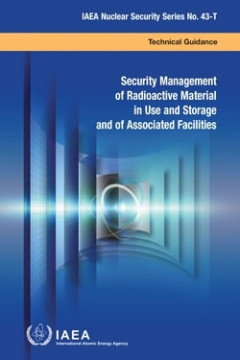
Security Management of Radioactive Material in Use and Storage and of Associa…
The IAEA Nuclear Security Series provides international consensus guidance on all aspects of nuclear security to support States as they work to fulfil their responsibility for nuclear security. The IAEA establishes and maintains this guidance as part of its central role in providing nuclear security related international support and coordination. The IAEA Nuclear Security Series was launched in…
- Edisi
- -
- ISBN/ISSN
- 978–92–0–118321–7
- Deskripsi Fisik
- 68 p
- Judul Seri
- IAEA nuclear security series
- No. Panggil
- 620.267:343.852 IAE s
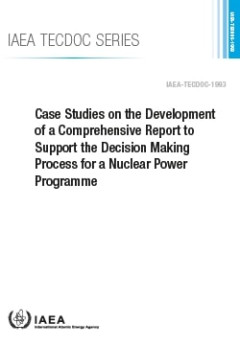
Case Studies on the Development of a Comprehensive Report to Support the Deci…
Launching a nuclear power programme is the sovereign decision of a country and constitutes a major undertaking requiring careful planning, preparation and investment in time, institutions, financing and human resources. The IAEA has developed a three phase methodology to support the development of the national infrastructure required for a nuclear power programme in a Member State. Known as …
- Edisi
- -
- ISBN/ISSN
- 978-92-0-101922-6
- Deskripsi Fisik
- 74 p
- Judul Seri
- International Atomic Energy Agency, 2022
- No. Panggil
- 621.483 IAE c
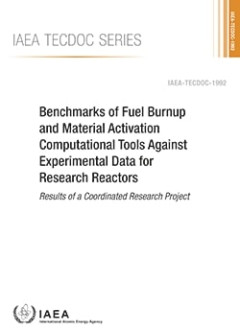
Benchmarks of Fuel Burnup and Material Activation Computational Tools Against…
Research reactors are powerful tools that contribute to scientific and technological progress worldwide. They are used for research and development in a wide variety of fields, in capacity building in nuclear science and technology, to produce radioisotopes crucial for medical and industrial applications, to support the development of national nuclear infrastructure, and in many other research …
- Edisi
- -
- ISBN/ISSN
- 978-92-0-101222-7
- Deskripsi Fisik
- 276 p
- Judul Seri
- IAEA TECDOC series
- No. Panggil
- 621.483 IAE b
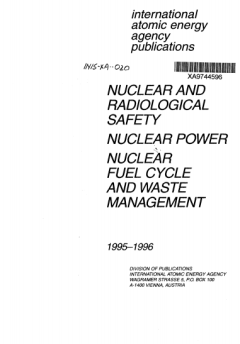
Nuclear and Radiological Safety, Nuclear Power, Nuclear Fuel Cycle and Waste …
This catalogue lists all sales publications of the International Atomic Energy Agency dealing with Nuclear and Radiological Safety, Nuclear Power and Nuclear Fuel Cycle and Waste Management and issued during the period of 1995-1996. Most publications are in English. Proceedings of conferences, symposia and panels of experts may contain some papers in languages other than English (Arabic, Chines…
- Edisi
- -
- ISBN/ISSN
- -
- Deskripsi Fisik
- -
- Judul Seri
- -
- No. Panggil
- 333.7924 IAE N
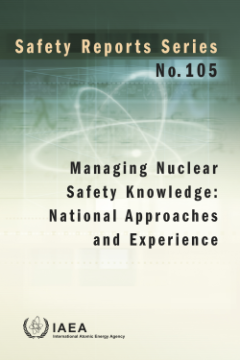
Managing Nuclear Safety Knowledge: National Approaches and Experience - Safet…
This publication provides practical guidance and information to Member States on how to manage nuclear safety knowledge at the national level, beyond the boundaries of individual organizations. It describes the underlying concepts, challenges and available approaches and tools, as well as summarizing the experience gained by Member States to date. The publication is in line with the ultimate ob…
- Edisi
- -
- ISBN/ISSN
- 978-92-0-104221-7
- Deskripsi Fisik
- 45 pages
- Judul Seri
- -
- No. Panggil
- 621.48 IAE M
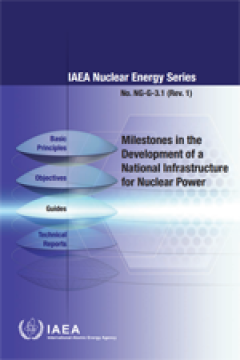
Milestones in the Development of a National Infrastructure for Nuclear Power …
The development and implementation of an appropriate infrastructure to support the successful introduction of nuclear power and its safe, secure, peaceful and sustainable application is an issue of central concern, especially for countries that are considering and planning their first nuclear power plant. In preparing the necessary nuclear infrastructure, there are several activities that need …
- Edisi
- -
- ISBN/ISSN
- 978-92-0-104715-1
- Deskripsi Fisik
- 70 Pages
- Judul Seri
- -
- No. Panggil
- 384.551 IAE M
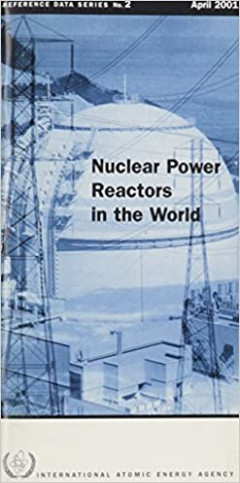
Nuclear Power Reactors in the World. April 2001 Edition
This is the twenty-first edition of Reference Data Series No. 2, which presents the most recent reactor data available to the Agency. It contains summarized information as of the end of 2000 on: (1) power reactors operating or under construction, and shut down; and (2) performance data on reactors operating in the Agency's Member States, as reported to the Agency. The information is collected b…
- Edisi
- -
- ISBN/ISSN
- -
- Deskripsi Fisik
- -
- Judul Seri
- Reference Data Series No. 2
- No. Panggil
- 621.483 IAE N
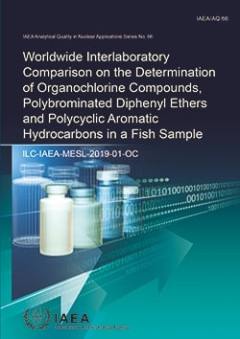
Worldwide Interlaboratory Comparison on the Determination of Organochlorine C…
The marine environment, as a global sink of persistent chemical mixtures, needs to be regularly monitored to assess the status of pollution and its impact on different marine compartments. Policy makers need access to reliable, accurate and comparable analytical data to enable sound management of the marine environment. Among the goals of the IAEA Marine Environmental Laboratories is to assi…
- Edisi
- -
- ISBN/ISSN
- 2074–7659
- Deskripsi Fisik
- 204 P
- Judul Seri
- IAEA Analytical Quality in Nuclear Applications Series No. 66
- No. Panggil
- 621.48 IAE w
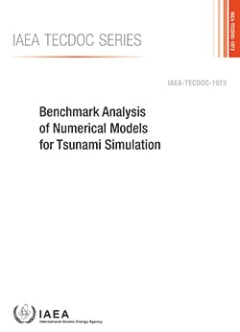
Benchmark Analysis of Numerical Models for Tsunami Simulation: IAEA TECDOC No…
The 2004 Indian Ocean tsunami damaged the Madras Atomic Power Station in India and led to a new understanding of the importance of flooding hazards caused by tsunamis at nuclear power plant sites. The Great East Japan Earthquake and subsequent tsunami in 2011, which heavily damaged the Fukushima Daiichi nuclear power plant, re-emphasized the importance of tsunami hazard assessments. Recognizing…
- Edisi
- -
- ISBN/ISSN
- 978-92-0-128321-4
- Deskripsi Fisik
- 146 p
- Judul Seri
- IAEA TECDOC series
- No. Panggil
- 551.4637 IAE b
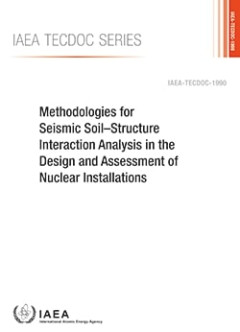
Methodologies for Seismic Soil–Structure Interaction Analysis in the Design…
The response of a nuclear installation’s structure during an earthquake depends on the characteristics of the ground motion, the surrounding soil and the structure itself. Soil– structure interaction (SSI) analysis is used to evaluate the effects of seismic ground motion on an installation’s structure, system and components, to ensure it is designed to withstand the effects of earthquakes…
- Edisi
- -
- ISBN/ISSN
- 978-92-0-143121-9
- Deskripsi Fisik
- 194 p
- Judul Seri
- IAEA TECDOC
- No. Panggil
- 621.039.58 IAE m
 Karya Umum
Karya Umum  Filsafat
Filsafat  Agama
Agama  Ilmu-ilmu Sosial
Ilmu-ilmu Sosial  Bahasa
Bahasa  Ilmu-ilmu Murni
Ilmu-ilmu Murni  Ilmu-ilmu Terapan
Ilmu-ilmu Terapan  Kesenian, Hiburan, dan Olahraga
Kesenian, Hiburan, dan Olahraga  Kesusastraan
Kesusastraan  Geografi dan Sejarah
Geografi dan Sejarah